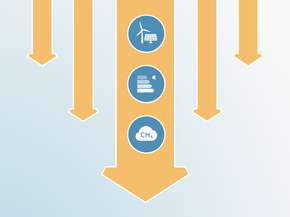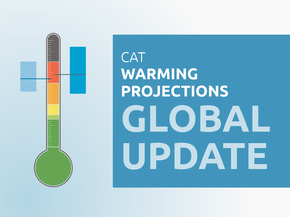Assumptions
Historical emissions
Historical emissions data is primarily taken from the LT-LEDS inventory, covering emissions from 2000-2020 for all sectors, expressed in AR5 values without gas-by-gas separation for any sectors. These values are subsequently converted to AR4 equivalents using sector-specific gas-by-gas ratios. Specifically, we utilise PRIMAP2023 (Gütschow, 2023) as gas-by-gas ratio data for the energy, industry, waste, and agriculture. Excluding LULUCF, the time series was extended back from 2000 to 1990 using PRIMAP 2023 growth rates (Gütschow, 2023). For LULUCF emissions, we used to the Third National Communication historical inventory, as we consider government data to be the most accurate source, particularly for Ethiopia’s dominant sectors like agriculture (Federal Democratic Republic of Ethiopia, 2022).
Current policy projections
The upper bound of the current policy projections uses data from the business as usual (BAU) pathway presented in the LT-LEDS, which serves to reflect the current policies, programmes, and government plans with no interventions or external mitigation actions adopted. However, it's important to note that, like historical emissions, LT-LEDS data is presented in AR5 format and lacks sector-specific gas data. We converted the data into AR4 format using gas-by-gas ratios in PRIMAP year 2022 (Gütschow, 2023) for all sectors except LULUCF, which is not included in current policies projections.
The lower bound of the current policy projections is based on emissions projections from various sources. For the energy sector, we used non-CO2 emission projections from the US EPA (EPA, 2019) and CO2 emissions projections from the Stated Policies Scenario (STEPS) in IEA’s 2019 Africa Energy Outlook (IEA, 2022). The agricultural and waste sectors use non-CO2 emission projections from the US EPA 2019. CO2 emissions in these sectors are considered negligible. For the industry sector, we assume emissions increase at the same rate as GDP. IMF GDP growth rate projections were used for 2022-2028 and growth rates from the LT-LEDS assumed in the BAU scenario were used for 2029-2030.
Net-zero target and other long term targets
Ethiopia's LT-LEDS outlines sectoral pathways but remains unclear regarding the waste and forestry sectors. The strategy projects that the forestry sector will achieve cumulative net emissions of -8.2 GtCO2e between 2020 and 2050, which is a notably ambitious figure that raises uncertainties about its practical implementation and the concrete role to offset emissions from other sectors. Moreover, the LT-LEDS also does not specify which pathway is most likely for LULUCF and it leads to the assumption that LULUCF emissions should counterbalance emissions from all other sectors to achieve net-zero emissions by 2050. Consequently, the estimated LULUCF net sink in 2050 is derived by summing the projected emissions from all other sectors.
Global Warming Potentials values
The CAT uses Global Warming Potential (GWP) values from the IPCC's Fourth Assessment Report (AR4) for all its figures and time series. Assessments completed prior to December 2018 (COP24) used GWP values from the Second Assessment Report (SAR). All the data sources which used AR5 are converted into AR4 equivalents using various methods that are detailed within each pathway.
Further analysis
Latest publications
Stay informed
Subscribe to our newsletter




